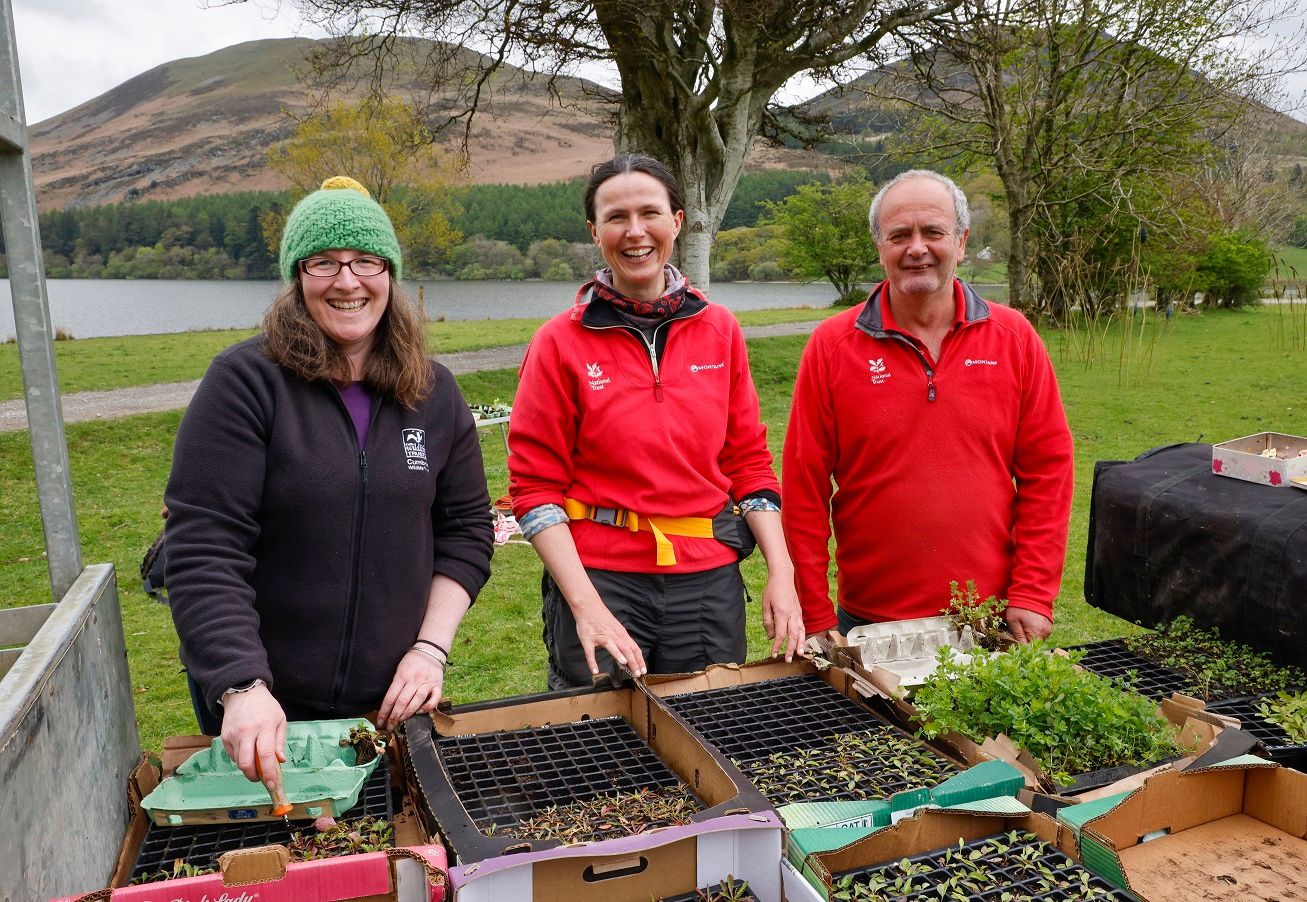Restoring The Loweswater Meadow As Part Of The Planting For Pollinators Green Recovery Challenge Fund 2022
Work has begun to restore 16 hectares of degraded meadows in Loweswater to help pollinators and grassland thrive. The National Trust and Cumbria Wildlife Trust were joined by groups of local volunteers to plant 5,000 plug plants into the ground at High Nook Farm. Bringing local charities and community groups together to plant locally grown species, this has remained a Cumbrian project from beginning to end.
The work is being funded with a grant from the Green Recovery Challenge Fund, with the National Trust, in partnership with Cumbria Wildlife Trust, having secured £19,500 as part of the Planting for Pollinators project. These funds are being used to restore an area of over 16 hectares in Loweswater and create pollen and nectar resources for pollinators.
As a result of botanical surveys, lime has been added to six fields at High Nook Farm and two at Rannerdale Farm. This will help to restore pH levels to the soil and ensure that native wildflower species are given the best chance to survive. The wildflower seeds will be spread in late summer and autumn this year.
The plug planting took place over four days in May and June, with help from Cockermouth based Wild Chorus community choir, children at Lorton Primary School, volunteers and National Trust rangers. Each plug plant was grown locally by Cumbria Wildflowers and are all native species such as oxeye daisy, black knapweed, great burnet and meadow vetchling among others.
Tanya St. Pierre, Planting for Pollinators Project Manager at Cumbria Wildlife Trust says:
“We are delighted to be working with the National Trust to deliver landscape scale habitat works for pollinators. Species rich hay meadows are one of the best habitats for pollinators, such as bumblebees, as they provide a high concentration of nectar and pollen sources through the summer months. By reinstating flower rich habitats at Loweswater and at other sites within the Vale of Lorton and across north and west Cumbria, and by working with local communities, we hope to concentrate our efforts, and collectively make a significant contribution towards species recovery.”
The need for such works is clear from the dire situation pollinators now find themselves in. The abundance of insects has fallen by 50% worldwide in the last 50 years with many species still facing rapid decline. Defra has identified the loss of flower rich habitat to be the main cause for the drop in the number of wild bees and other pollinators. In the last 80 years, the UK has lost 97% of its flower rich meadows, 50% of its hedgerows and 60% of all flowering plants. Although the situation is urgent, there is a lot that can be done to reverse this decline and ensure that future generations of pollinators will thrive.
Planting for Pollinators builds on the award-winning work done previously through the Get Cumbria Buzzing project and aims to reverse the decline of pollinators in Cumbria. By creating and expanding on blossom rich habitats such as gardens, grasslands, hedgerows, glades etc, we can ensure pollinators have access to nectar rich zones which provide food, shelter and nesting sites as they move along their existing network of pathways or “B-lines” in north Cumbria.
Once completed, these works should also provide learning opportunities and teaching grounds for those looking to learn about how to best manage their lands with regards to looking after pollinating insects. By getting the community involved and growing interest on a wider scale, there is a better chance of safeguarding the future of these important species and the critical role they have in our ecosystems.

